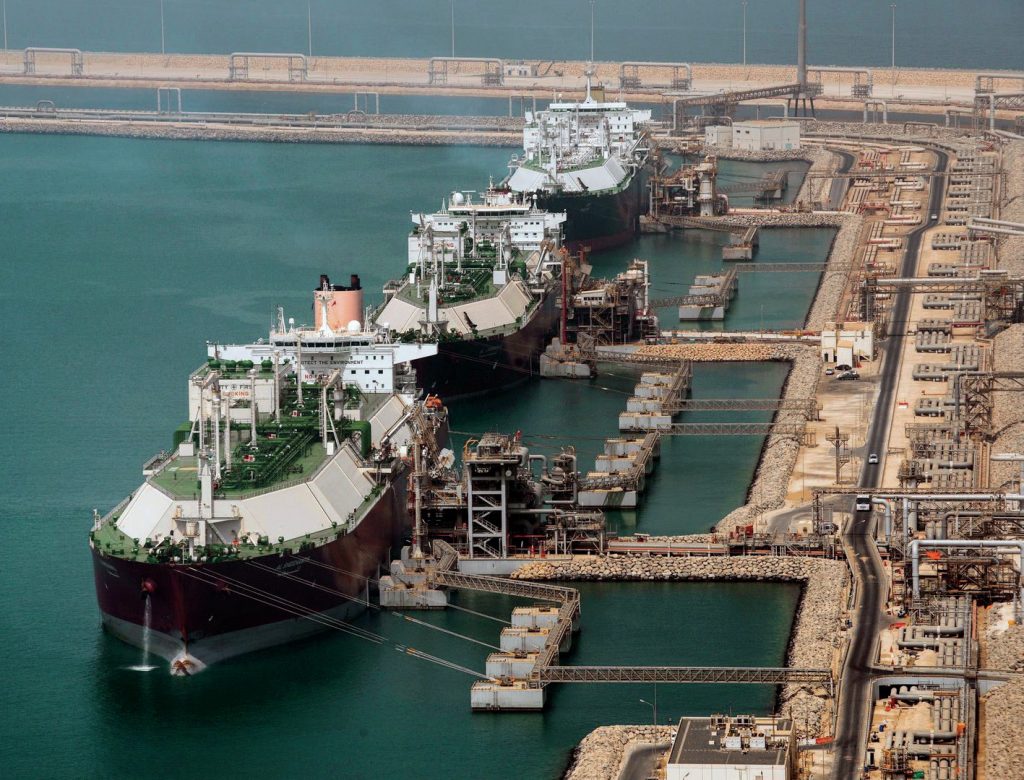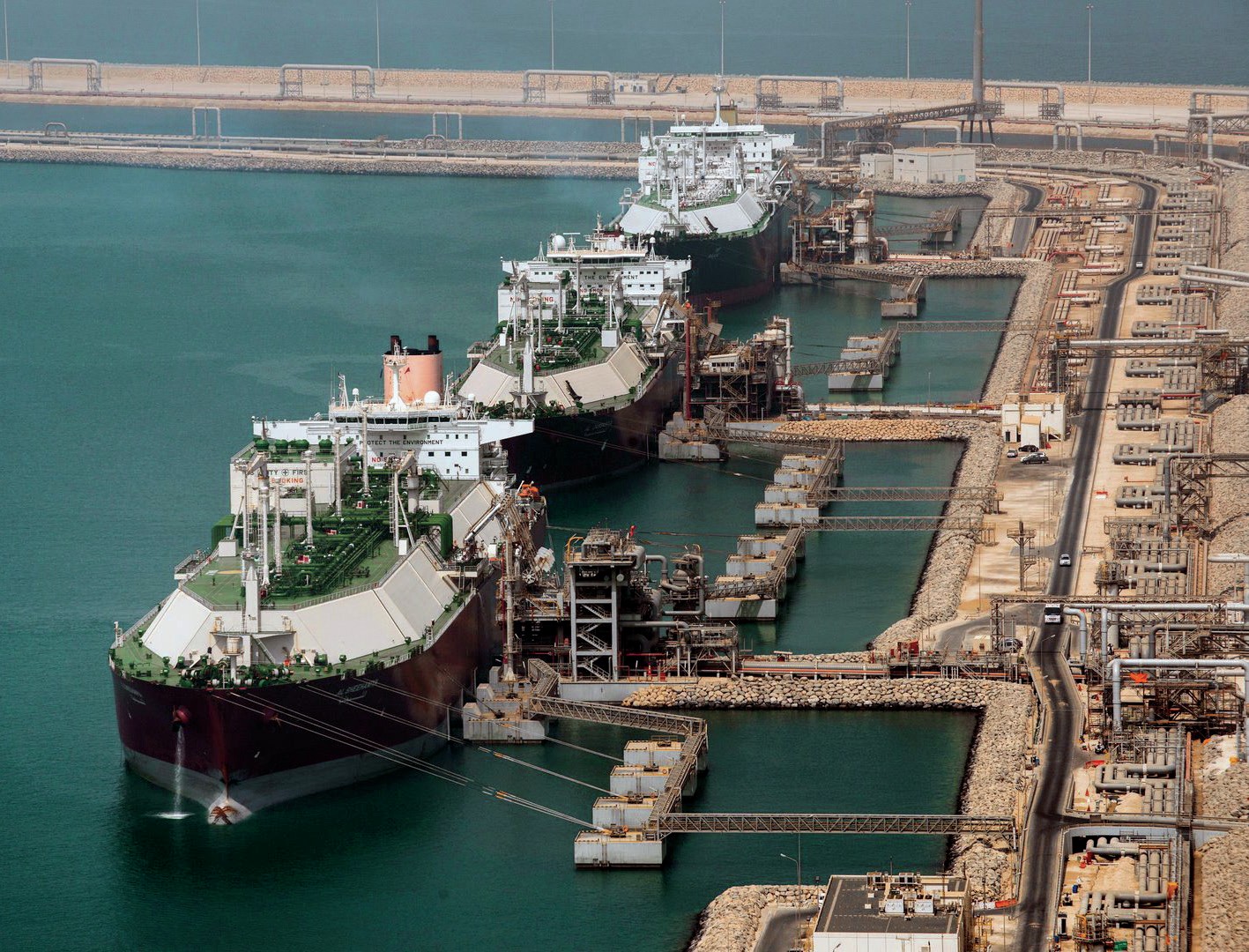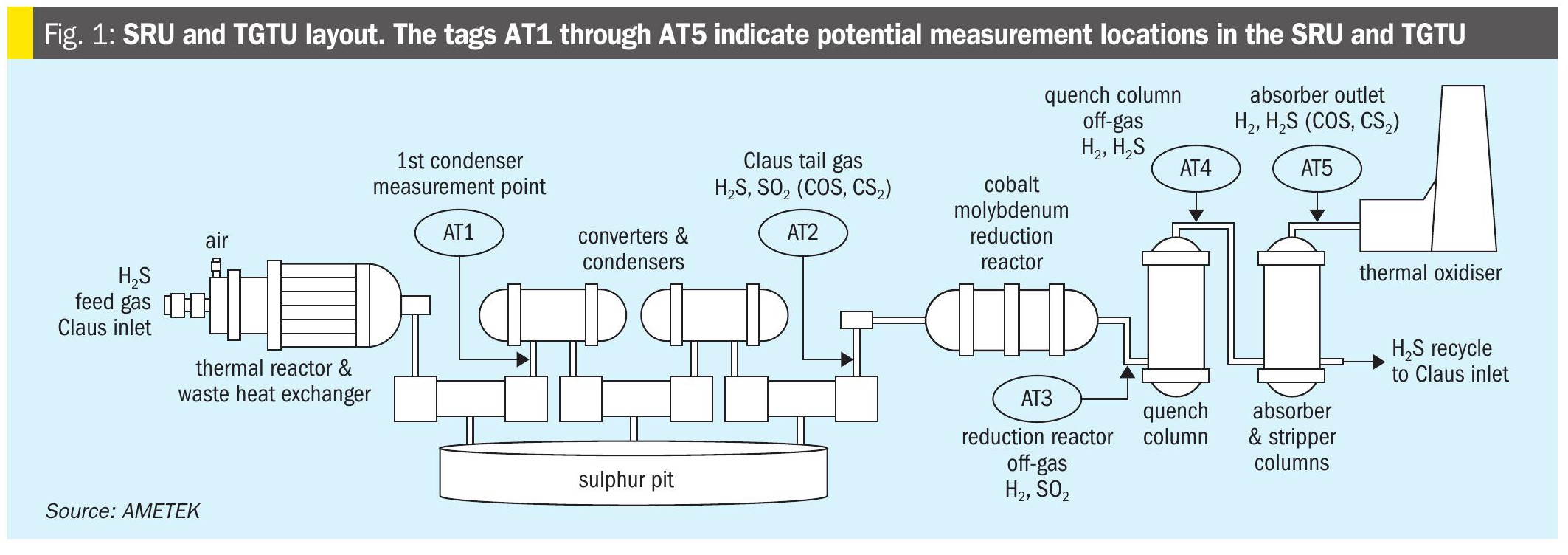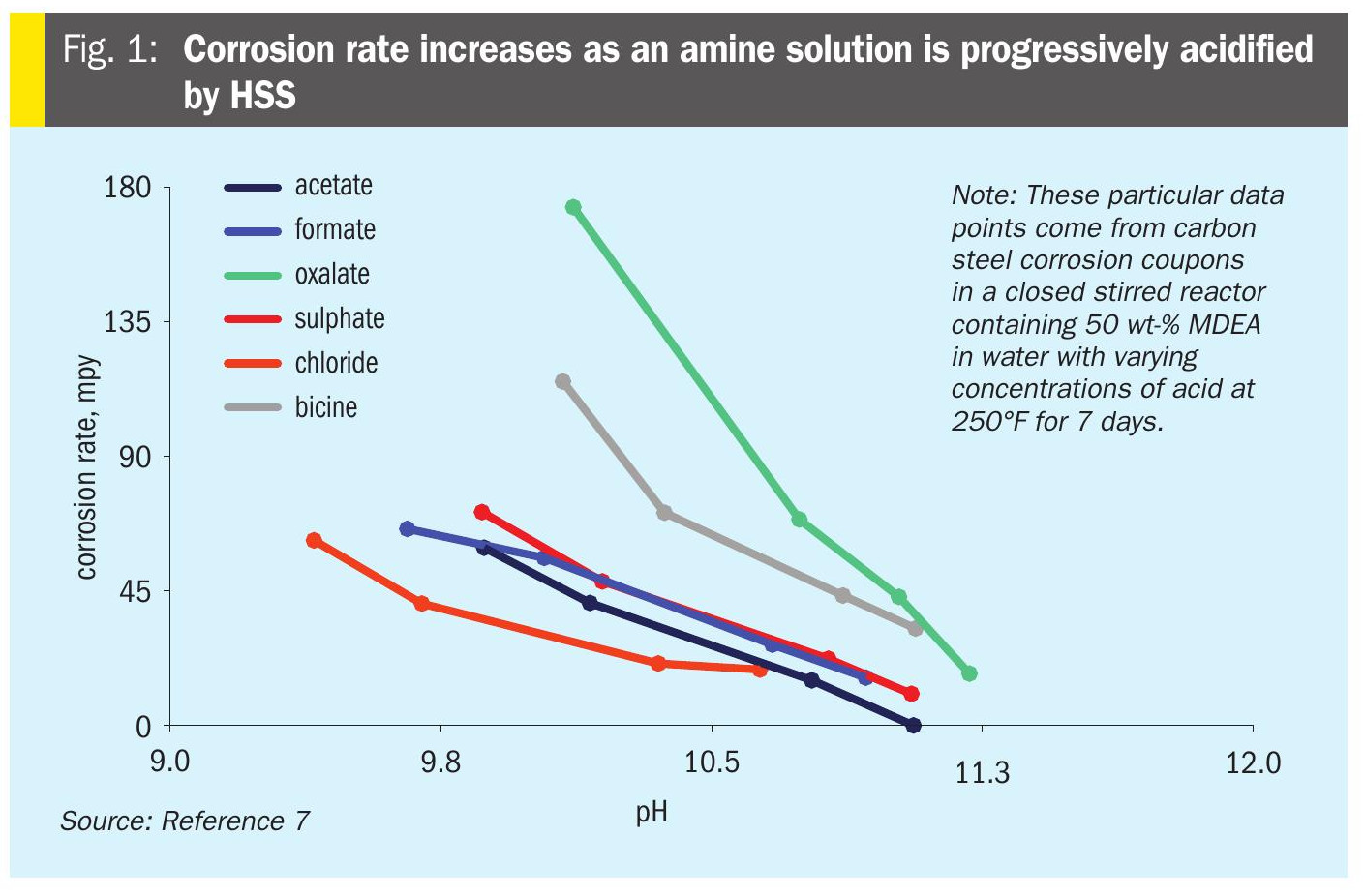Sulphur 397 Nov-Dec 2021

30 November 2021
Sour gas projects
SOUR GAS
Sour gas projects
Although the number of new sour gas developments has slowed in recent years compared to the large boost of the previous decade, sour gas projects continue to be a major source of new sulphur production.

Sulphur extraction from processing of sour gas represents around 50% of all recovered sulphur, and can have an outsize effect on sulphur markets. While sulphur recovery projects at refineries are often incremental, sour gas plants often process large volumes of gas and hence recover large tonnages of sulphur, making the project slate for new sour gas developments all the more important. Globally, around one third of all sour gas reserves can be classified as highly sour (>1% H2 S), and these are concentrated in four main regions: the Middle East, Central Asia, China, and North America. Each has had a history of sour gas development, for different reasons, but the Middle East has the largest proportion of sour reserves, sometimes up to 20-30% H2 S, and the largest incentive to develop them.
Middle East
Sour gas in the Middle East centres around the huge Khuff basin, which extends under the waters of the Arabian Gulf offshore of Saudi Arabia, Iran, Qatar and Abu Dhabi, and then onshore through the east of Saudi Arabia, south of the UAE and into Oman in the east. Most of the countries concentrated on oil production during the 20th century, with the exception of Qatar, whose lack of oil led it to instead focus on developing its gas reserves. However, rising populations and developing cities have left many states needing additional gas for electricity production and are now leading to the tapping of these sour gas reserves.
Abu Dhabi
New gas discoveries in Abu Dhabi have recently brought reserves in the UAE to the sixth largest in the world, though gas production in the Emirates has plateaued at just below 60 bcm per year, and runs behind consumption of around 70 bcm. The UAE as a whole has been a net importer of gas since 2008 as the fast growing cities of Dubai and Abu Dhabi require more power. Gas is imported from Qatar along the Dolphin pipeline, and to Dubai as LNG, though ADNOC also exports 7.7 bcm of LNG from the offshore Das Island terminal.
Abu Dhabi has hugely ambitious plans for its oil and gas development. Last year its Supreme Petroleum Council approved a $122 billion investment plan for oil and gas out to 2025, including raising oil capacity by 1 million bbl/d to 5 million bbl/d (even though the UAE’s OPEC quota is currently only 2.4 million bbl/d). The Council is also looking to try and achieve self-sufficiency for the UAE in gas production, and possibly even become a net exporter.
To do so Abu Dhabi’s National Oil Company (ADNOC) has been forced to exploit large sour gas fields both onshore and offshore of the Emirate. Currently the largest gas processing sites are at Habshan, which processes gas from the Bab, Umm Shaif and Thamma fields, and the large onshore Shah gas field and processing plant, in the desert 210 km southwest of Abu Dhabi. Both sites produce around 10,000 t/d of sulphur, for a total of 6.6 million t/a. Another 400,000 t/a comes from the Das Island plant, with the Ruwais refinery generating another 100,000 t/a.
However, there are major sour gas expansions in the pipeline. Germany’s Wintershall and Italy’s ENI are working with ADNOC to develop the Hail and Ghasha offshore ultra-sour gas fields. This will involve the construction of artificial islands and two causeways. It is expected to produce over 1.5 billion scf/d of sales gas by around 2025. In addition, ADNOC plans to boost production from its Shah sour gas field from about 1.3 billion scf/d to 1.5 billion scf/d through its joint venture with Occidental. It also plans to move forward to develop sour gas fields at Bab and Buhasa.
The Shah expansion is expected to increase sulphur production by 5,000 t/d (1.6 million t/a) from about 2024. Ghasha/Hail is at an earlier stage – contracts are still being awarded and the front end engineering design is being rejigged, and the project may not reach capacity until towards the end of the decade.
Qatar
Qatar’s sour gas production comes from processing gas from the North Field, the largest natural gas field in the world. Gas from the North Field is typically around 0.5% H2 S, but can range as high as 6%. What has driven Qatar’s sulphur output is the decision to become the world’s largest LNG exporter, and the sheer volume of gas which that requires to be processed. Via seven majority owned operating company joint ventures with Exxon, Conoco, Shell and others, at the start of 2020 state gas monopoly Qatargas operated 14 LNG trains with a total capacity of 68 million t/a of LNG. Gas is brought ashore and processed at Ras Laffan at the tip of the peninsula, and sulphur sent to the Common Sulphur Facility at the site for export.
Most of this LNG capacity was built during the 1990s and 2000s, and Qatar maintained a moratorium on new gas-based developments from 2011-17 to extend the life of its reserves. However, it did proceed with one project during this time, albeit delayed on several occasions; the Barzan LNG project, in which ExxonMobil is a 7% shareholder. There are two LNG trains in the Barzan project, with a combined capacity of 1.4 billion scf/d (9.8 million t/a). Although construction was largely completed by 2014, the start-up date for Barzan slipped from its projected 2015-16 first because of leaks in the gas pipeline running from the production wells to the mainland, and then because of the covid pandemic. However, ExxonMobil says that the project did finally start operations during 2020.
Additional sulphur from Barzan gas has added several thousand t/a to Qatar’s production. In September 2021 Qatargas announced that it had achieved the milestone of a stable 10,000 t/d of sulphur output at Ras Laffan during August; equivalent to 3.3 million t/a (the figure includes sulphur from refinery processing at Ras Laffan, but is mostly from sour gas operations).
Qatar has now decided to raise output by a further 32 million t/a of LNG via the North Field Expansion Phase 1. This project too has slipped however, and choice of project partner will now not be until the start of 2022. A final investment decision on the 16 million t/a second phase should also come in the first quarter of 2022, according to Qatargas. Phase 1 could begin operations in 2025, and would add another 600,000 t/a of sulphur production capacity.
“In September 2021 Qatargas… achieved the milestone of a stable 10,000 t/d of sulphur output.
Saudi Arabia
Saudi Arabia has the fourth largest gas reserves in the world, but for many years focused rather upon its oil output and let much gas go to flaring. Beginning in the 1980s it began construction of its Master Gas Gathering System for associated gas, and began to consume gas domestically for power generation, water desalination, enhanced oil recovery, and other industrial consumption (eg ammonia, methanol production). However, Saudi Arabia’s gas demand continues to rise. One driver is an attempt to reduce consumption by oil-burning power stations to free up more oil for export. However, much of the country’s domestic gas production is from associated gas, and hence production can be constrained by OPEC quotas. To overcome this Saudi Arabia has turned to its standalone gas reserves, most of which are sour, and therefore, like Abu Dhabi, Saudi Arabia has found itself increasingly having to process highly sour gas fields. The Kursaniyah gas plant started up in 2012, followed by Wasit in 2016, with a gas processing capacity of 2.5 billion scf/d and sulphur production of 1,200 t/d. The Fadhili gas plant began operations in 2020. At capacity it processes 2 billion scf/d of gas from the offshore Hasbah field to generate sales gas and 500 million scf/d from the onshore Khursaniyah field to operate a cogeneration power plant. Sulphur output from Fadhili is 4,000 t/d (1.3 million t/a) at capacity, taking Saudi sulphur production capacity to 8.5 million t/a, nearly 90% of that from gas processing.
Upcoming expansion projects are focused mainly upon oil but will produce some associated gas and condensates. The Marjan expansion project aims to increase the oil production by 300,000 bbl/d, with a similar amount of condensates, as well as large volumes of associated gas. As part of the expansion, increased associated gas from the Zuluf field will be separated and sent to the onshore Tanajib gas plant, which is being expanded to handle an additional 2.5 billion scf/d of gas. Aramco says that it expects Tanajib to become operational in 2025.
In the longer term, Aramco has also announced the development of the huge Jafurah gas field, the largest unconventional non-associated gas field in the Kingdom, covering 170 km by 100 km and containing 200 tcf of gas. Production is expected to begin in 2024, but will not reach its target of 2.2 billion scf/d of sales gas until 2036.
Central Asia
The area of sour gas exploitation in Central Asia is mostly around the Caspian Sea region, in Russia to its west, Kazakhstan to its north and east, and the zone of sour oil and gas reserves extends further south east into Turkmenistan and Uzbekistan. Onshore deposits in Russia and Kazakhstan are the longest standing and most mature, with discoveries going back to the 1960s and exploitation to the 1980s, while new exploration has focused on offshore reserves in the North Caspian and onshore reserves into Turkmenistan.
Russia produced 5.0 million t/a of sulphur from sour gas processing in 2020, according to Gazprom, down from 5.4 million t/a in 2019. Some of this sulphur comes from gas piped across the border in Kazakhstan, from the Karachaganak field. While there are no new sour gas projects in Russia, Karachaganak is involved in a debottlenecking project which aims to process sour gas on the Kazakhs side of the border to expand production. However, the acid gas separated from the sales gas will be reinjected into the well.
Elsewhere in Kazakhstan, the largest producer is TengizChevroil (TCO), which is a joint venture between Chevron (50%), ExxonMobil 25%, KazMunaiGaz 20%, and Russia’s Lukoil 5%. TCO produces around 2.5 million t/a of sulphur, and although there is a wellhead pressure maintenance project planned to be completed in 2023, this will also involve acid gas reinjection to boost oil output, and no extra sulphur will be produced.
Kashagan in Kazakhstan is another oil project with sour associated gas. Oil production was supposed to be 450,000 bbl/d in the first phase, but is likely to run at only 300,000 bbl/d this year. One barrier to increasing capacity is reportedly throughput of the associated gas processing section, and so there is now a new plan in train to build a new gas processing plant 12 km northeast of the existing onshore Bolashak oil and gas treatment complex, to accommodate associated gas production from Kashagan. The $860-million gas plant will have a design capacity to process 1 bcm of sour gas from Kashagan to produce 0.82 bcm of sales gas, and 155,000 t/a of liquid fractions and condensate. It will also increase sulphur production by 210,000 t/a. Commissioning is currently set for 4Q 2023.
In neighbouring Turkmenistan, sulphur comes from the gas processing plant at Galkynysh (formerly known as South Yolotan), where gas with an H2 S content of around 6% is processed. Galkynysh is currently processing around 2 bcm of sour gas per month, according to Türkmengaz, and producing about 90,000 tonnes per month (1.1 million t/a) of sulphur.
Finally, the Kandym sour gas plant in Uzbekistan, which began operations in April 2018. It processes 8 bcm per year of sour gas and condensate from six gas fields; Kandym, Kuvachi-Alat, Akkum, Parsanal, Khoji and West Khoji. Sulphur production is running about 180,000 t/a.
China
China’s demand for gas is growing faster than any other country in the world, as its government tries to pivot away from its reliance on coal in a bid to reduce pollution and smog as well as lower the country’s carbon emissions. This is leaving the country with a growing deficit however. Petro-china says that it estimates Chinese gas demand for 2021 will be 350-356 bcm per year, up almost 10% on 2020’s figure of 326 bcm. Chinese gas production reached 193 bcm in 2020, up by 9.8%, but imports continue to grow. To meet its rapidly growing demand China is looking to any potential sources of gas, including shale gas, coalbed methane and sour gas.
China’s sour gas fields are mostly in the southern province of Sichuan, where there are three major projects with associated gas processing capacity. The Puguang sour gas processing plant, operated by Sinopec, became operational in 2011, and produces around 1.7 million t/a of sulphur. Sinopec’s other field, Yuanba, began operating in 2014. Sulphur content of the gas is lower here and total sulphur output is around 300,000 t/a.
The last of the three is a partnership between the China National Petroleum Corp and Chevron at Chuandongbei. Gas production began in 2016, and there is a 400,000 t/a sulphur plant as part of the development. Chuandongbei is the only one of the three sour gas plants where there are expansions likely in the near future. The second stage of development, scheduled for 2023, will include the Tieshanpo gas field and the construction of another gas processing plant. A final stage will involve the development of the Dukouhe and Qilibei gas fields. Sulphur output is likely to increase by 300,000 t/a with the completion of Phase 2.
North America
Sour gas production in North America comes mainly from the Rocky Mountains, in a belt extending from British Columbia in the north, through Alberta and then down into the continental United States. This region was the birthplace of the sour gas and sulphur industries in the 1920s, but because of that the fields are old and mainly played out. Maturing gas fields and the shale gas boom have undercut US and Canadian sour gas production and destroyed much of the economic rationale for developing new fields.
In the US, production of sulphur from sour gas was 276,000 tonnes in 2020, according to the US Geological Survey, down from 323,000 t/a in 2019. Of this, 45% came from the PADD 3 region – the US Gulf Coast – and 54% from the PADD 4/5 region – the west coast and Rocky Mountains area. This figure has declined steeply, especially in the Gulf Coast; a decade ago in 2010 US sour gas production was responsible for 1.17 million t/a of sulphur production.
It is a slightly different story in Canada. Although sour gas production has fallen in Alberta, where sour gas producers generated 1.46 million t/a of sulphur in 2020 according to the Alberta Energy Regulator (AER) – about half the figure for 2011 – in British Columbia sour gas production bottomed out in 2018 and since then has been rising. Most of the natural gas recovered from the unconventional Montney Play Trend in BC has little to no H2 S content, though the large volumes of gas recovered still generate a reasonable quantity of sulphur. There are also fields such as Heritage with H2 S concentrations of up to 0.5% and the Birch-Nig-Umbach area has H2 S concentrations up to 2.2%. British Columbia’s sour gas sulphur output rose to just over 400,000 t/a in 2020, up from 270,000 t/a in 2019. Though this is still well down on the 2011 figure of 800,000 t/a, it means that overall Canadian sour gas sulphur production actually rose in 2020 for the first time in many years, to 1.9 million t/a.
New sulphur
New sour gas projects do not dominate the forecast for new sulphur production in the way that they used to. Nevertheless, as this review reveals, there is still new capacity coming on-stream over the next few years.
In Europe and North America, production continues to decline. CRU recently forecast that Germany’s Wintershall sour gas facility will close in the second half of this decade, removing almost all of Europe’s remaining sour gas production. In North America, British Columbia has seen an uptick in production which may balance falling output in Alberta, but the trend is still downwards. In China, production is increasing, but not as quickly as had been anticipated a few years ago, and new output may only total 300,000 t/a of sulphur. In Central Asia, the major issue is the relative inaccessibility of the gas fields, and the consequent difficulty in exporting sulphur from the region. Kazakhstan’s government has also cracked down on sulphur storage, forcing TCO to sell its stockpile. Most new sour gas projects therefore are looking to acid gas reinjection to boost oil production, although the Kashagan expansion is an exception to this. For the time being, then, it remains the Middle East where most new sour gas is being extracted, with Abu Dhabi, Saudi Arabia and Qatar the largest prospects. New sour gas sulphur production from these countries could total 3-4 million t/a by 2025, with the majority coming from the Shah expansion in Abu Dhabi.





